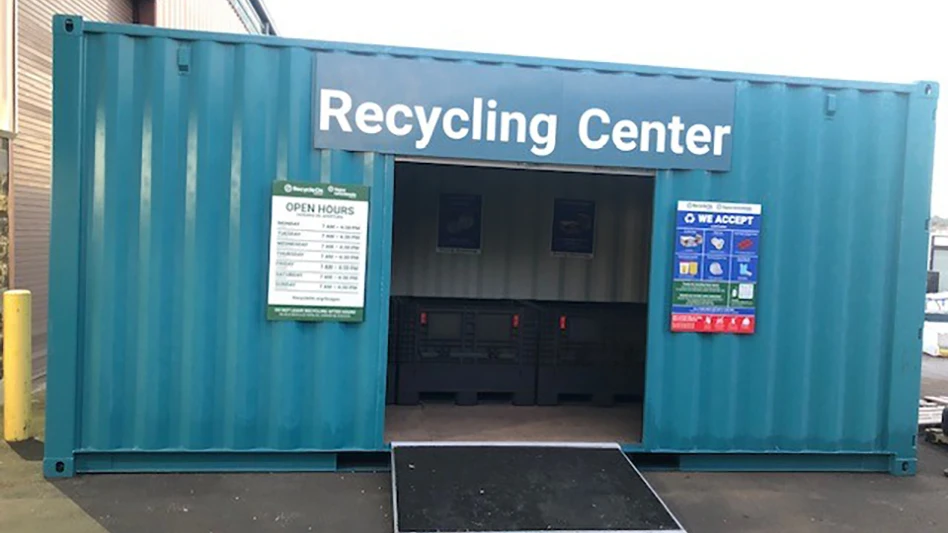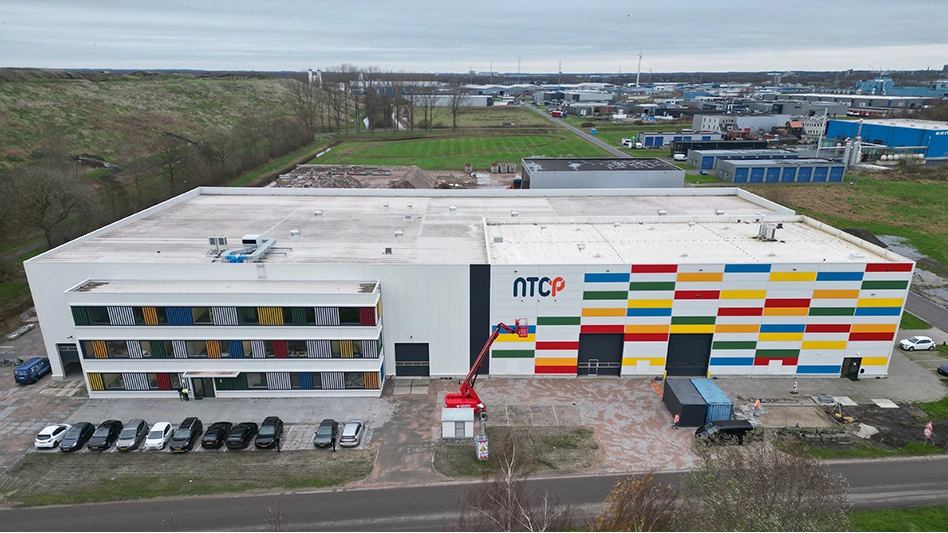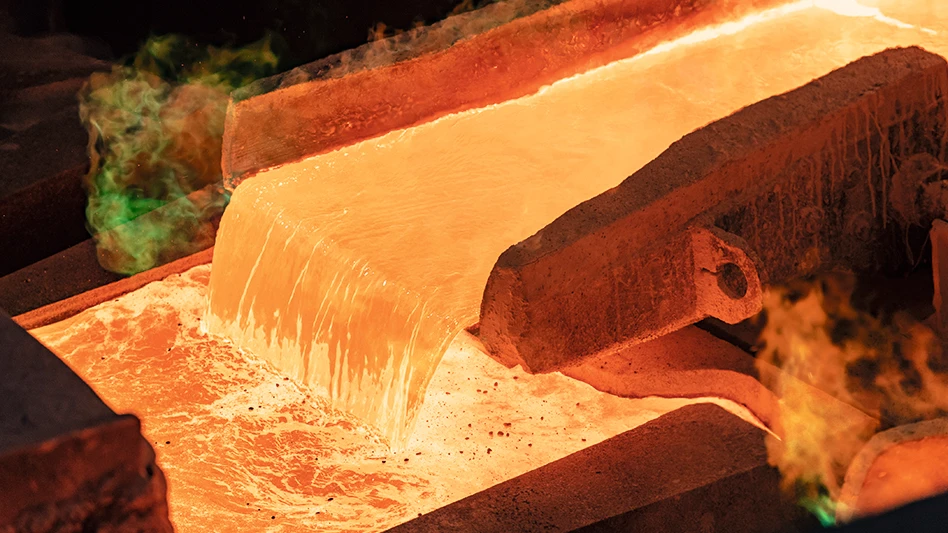Although mixed paper is certainly nothing new, it’s beginning to come into its own as a commodity. The increasing cost of old corrugated container has helped to bolster the demand for mixed paper, as it is often substituted for some of the OCC in containerboard. However, the composition of mixed paper is so varied, the result is a product of inconsistent quality.
All Together Now
The loose definition of mixed paper contributes to its variant composition and is considered the primary negative associated with mixed paper. Dan Krivit of Dan Krivit & Associates, St. Paul, Minn., has proposed a definition of mixed paper that excludes old newspapers and OCC. Instead, he has suggested a definition that includes three subgrades: old magazines, old boxboard and household office paper and mail. Under Krivit’s definition, discarded telephone books make up “an incidental portion” of OMG. However, the definition according to the Chicago Board of Trade Recyclables Exchange excludes OCC, ONP and OMG. The definition of mixed paper as provided by the Institute of Scrap Recycling Industries restricts the groundwood content of the various qualities of paper to less than 10 percent and the contaminants are restricted to 0.5 percent.
“The mills want a certain reliability,” Krivit says. “Even if there’s a changing mix in terms of the detailed types of paper that residents would include for recycling, they want a predictability to the mix. As the mills gain more experience with this commodity, they can blend it in their own recipes with some degree of certainty.”
Krivit believes that the industry needs to “choose a definition, specify it and stick with it” if mixed paper is going to develop into a sustainable commodity.
The second negative associated with mixed paper is that the technology at the mill-level is often times limited and therefore inefficient, with the shorter fibers passing through the cleaning process. The higher contamination levels also necessitate more frequent cleaning of the equipment, Jason Hale of the North Carolina Department of Environment and Natural Resources, Raleigh, says. The shorter length of the fibers also prevents them from bonding easily with other fibers.
Bill Moore of Bill Moore and Associates, Atlanta, says “too much capital is required to update the machinery.” Although he believes the market for mixed paper will grow, he expects that it will occur over a number of years as the capital expenditures become available to update equipment. However, the technology is available to increase the quality of mixed paper. Fractionation, for example, is a fluid technology that is used to separate the long and short fibers.
In addition to equipment improvements at the mill-level, there are steps that can be taken earlier in the process to improve the quality and uniformity of mixed paper. “I’m a big fan of education,” Hale says. “I support bringing the good material in from the start.” Hale suggests educating the supplier as to what is acceptable in the mix. In a municipality, for example, he suggests educating the collector so that nothing but acceptable materials make it onto the truck and into the processing plant. “Then, of course, you could go through sorting procedures,” Hale says.
Krivit also endorses education and good communication between the mills and the communities. “I think it would be better for the mills to say, ‘We’d like old boxboard, excluding carrier stock (uncorrugated kraft board), to be included in your program. We’d like old magazines to be included with old boxboard,’” Krivit says. By doing so, the mills have a degree of control over the uniformity of the mix.
The total amount of mixed paper collected in 1998 numbered 3,320,000 tons, according to the American Forestry and Paper Association. This makes up 14 percent of the 45,308,000 total tons of paper and paperboard recovered in 1998.
Trap Doors
Once a definition has been established and adhered to, there’s the instability of the mixed paper market to consider. Hale believes the market for mixed paper is at the mercy of the higher-grade feedstocks. “When the price of OCC increases,” Hale says, “someone will say, ‘Let’s take more mixed paper into the mix, because we can’t afford the OCC.’” But when the prices are stable at the high-grade end of the market, Hale worries that the bottom will fall out of the mixed paper market.
Tom Leyden of Owl Corp., Baltimore, believes that mixed paper will “never” grow into a commodity in its own right, because its desirability is determined by the price of OCC. “When cardboard gets up to a certain price, they want to start using extenders to make it go further. This drives the price of mixed paper up,” Leyden says. “And when the price of mixed paper gets up to a certain point, the mills have either caught up on their corrugated situation or have raised the price of corrugated again. That’s been the low grade cycle forever.”
“Sorted office waste is going to take a lot out of the mixed market,” Leyden says. “They have finally figured out how to use it and how to make a good product out of it. It’s really making the mixed paper market suffer because so many people are making sorted office waste out of mixed paper.”
Hale says that currently one or two mills in North Carolina have guaranteed markets for mixed paper, because it is one of the only feedstocks they use. “They don’t substitute in more OCC when the price goes down,” he says.
The North Carolina Department of Environment and Natural Resources is exploring applications that require low-grade paper. “Chicken paper,” a bedding for chicken houses, is produced by shredding mixed paper and chemically treating it for use in place of wood shavings. If Hale’s coworkers are successful in bringing in a company to produce the chicken paper, he feels it would be a viable market because “they would never require anything but the lowest-grades of paper.”
In addition to chicken bedding, studies are looking at the feasibility of using mixed paper in hydromulch and in composting, Hale says. “These are all good options that certainly work to add value to the product.”
Mix Mastery
The primary advantage driving the use of mixed paper is economic. “Mixed paper has an economic incentive as a substitute for OCC,” Moore says. Janet Berryhill of the Minnesota Office of Environmental Assistance, St. Paul, believes that by incorporating mixed paper into the paperboard mix, mills lower their costs, making them more competitive.
In addition to economics, North Carolina’s Hale points out that because mixed paper makes up such a large portion of the waste stream, creating a demand for the product will help North Carolina meet its landfill diversion goals, saving landfill costs and space. Recycling of mixed paper can also lead to tax credits for North Carolina businesses, Hale says. “Any business doing work that is deemed recycling work,” Hale says, “the areas of the plant or facility actually doing that work are exempt from property taxes. That’s a pretty nice little side-effect.”
Mixed paper is also a readily available feedstock, though collection rates in North Carolina are currently at 17%, according to a commodity profile issued by the North Carolina Department of Natural Resources, which is under the national average of 20%. The use of mixed paper is projected to increase by a higher percentage than other grades, Hale says. “I think it’s going to increase by something like 3% over the next three-to-five years,” Hale says.
Moore believes that the potential supply is overwhelming, despite the presently low recovery-rate. “But, it’s not a short-term trend, because so much of it is tied to people needing to do capital investments, and that translates into years.”
Minnesota mills have gone so far as to begin to install equipment that will facilitate processing of mixed paper, Berryhill says. She also says that mills in the state have plans to “moderately increase” their use of mixed paper.
Krivit also believes that the demand for mixed paper will see a moderate increase in the next three years. He believes the communities are going to show some reluctance to institute collection programs, however, until they have a secure commitment from the mills. “In the short-term, it’s going to take sound discussions and negotiation,” Krivit says. He believes that in a longer-term, five-to-ten year horizon, the prospects for increased demand are excellent.
“Residential mix will need to gain two-to-three years of experience before it will really take off,” Krivit says. “In general,” Krivit says, “there’s a more cautious approach to the growth of lower grade commodities, and that’s what we’re dealing with. The prognosis is positive, but it’s not a green light. It’s more of a conditional yellow light.”
The growth in demand is likely to come from the packing sector. “I think the real frontier is the container board sector,” Moore says. He believes that there’s nobody making recycled medium today that shouldn’t use mixed paper.
Hale believes that because society is so geared around the need for packaging, it will provide a sustainable market for mixed paper. “I think that because of how our economy is set up right now, that the packaging industry is going to be the best hope,” he says.
Both Berryhill and Krivit believe that newsprint mills will contribute to the increased demand for mixed paper. Berryhill knows of a Canadian newsprint manufacturer, Abitibi Consolidated, that plans to incorporate mixed paper into its recipe.
Ed Sparks, a fiber procurement specialist for Cedar River Paper Co, Cedar Rapids-based paperboard mill partly owned by Weyerhaeuser Paper, sees a good future for mixed paper, “especially in light of the number of the traditional newsprint consuming mills who can successfully integrate mixed paper as a fiber extender.”
“There’s more and more collection of magazines these days,” Krivit says, “and magazines are a subgrade of residential mixed paper as we define it.” He believes the evolution of #7 ONP will include a larger proportion of magazines.
Presently, most of the mixed paper collected today is used as a substitute for OCC in recycled paperboard by mills such as The Newark Group and Caraustar and in containerboard mills like Weyerhaeuser, Moore says.
These mills, as well as other mills geared to handle sizable loads of mixed paper, have many locations throughout the country, which could work to benefit mixed paper markets in more than one region.
Along with potential domestic end markets, a significant amount of mixed paper is exported, with China and Canada being the major consumers, Moore adds. Mixed paper is also finding its way into wallboard through companies such as USG and National Gypsum, Moore says.
Tissue mills also accept mixed paper, though their definition varies, Hale says. Tissue mills generally define “mixed paper” as “something similar to post-consumer office mix, which is office paper with some variability in weight and color,” Hale says. According to Sparks, the tissue mills are successfully using this higher-grade of mixed paper.
The demand for mixed paper appears to be on the increase. However, to ensure a quality product, common terms must be defined and collection systems must be established with the end product in mind. Innovative ideas, such as chicken bedding and hydromulch, which use only low-grade papers, should also be explored to take full advantage of this plentiful feedstock.
Communities and mills need to work together toward a commitment to increased use of mixed paper. Only then will mixed paper get the green light and be on its way to being a sustainable commodity.
The author is a staff member of Recycling Today magazine and Fibre Market News.
Latest from Recycling Today
- US Steel to restart Illinois blast furnace
- AISI, Aluminum Association cite USMCA triangular trading concerns
- Nucor names new president
- DOE rare earths funding is open to recyclers
- Design for Recycling Resolution introduced
- PetStar PET recycling plant expands
- Iron Bull addresses scrap handling needs with custom hoppers
- REgroup, CP Group to build advanced MRF in Nova Scotia





